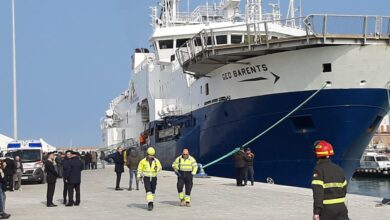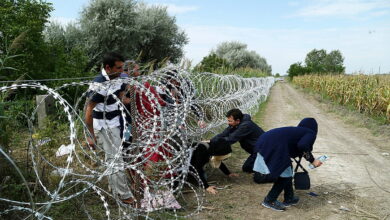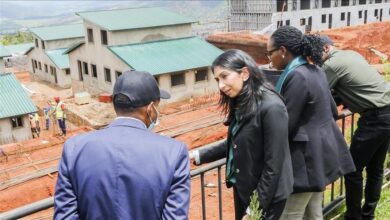A Turkish family is building an entire neighborhood in Idlib in memory of an Islamic scholar

BY| Orient-News
Brick houses in Idlib
In a humanitarian initiative to secure housing for Syrian refugees and displaced persons instead of the tents in which they reside, a famous Turkish family donated the construction of an entire neighborhood of brick houses in the Idlib region in northwestern Syria, in memory of the Islamic researcher Dia Al-Din Gumushane.
The Turkish newspaper, “Yeni Şafak”, reported, on Tuesday, that the company owned by businessman Sabri Faran and his wife donated the construction of an entire neighborhood consisting of 450 homes in the Syrian Idlib region, in order to house the displaced from the Jabal al-Turkman region.
She pointed out that the idea of building houses came in coordination with the Turkish Disaster and Emergency Management Authority (AFAD), according to previous instructions from President Recep Tayyip Erdogan and Interior Minister Suleiman Soylu, who directed the construction of about 100,000 brick homes for Syrian refugees and displaced persons in the north.
The newspaper said that the neighborhood will be called “Zia al-Din Gumushane” after the Islamic researcher of the same name, while the neighborhood’s streets will be named after Turkish names such as Turol, Shiran, and Kelket.
“We have done this work with a donation of 10 million Turkish liras, based on the instructions of our President Recep Tayyip Erdogan, and in coordination with Interior Minister Suleyman Soylu and disaster and emergency management officials,” said Sabri Varane, a businessman and AKP deputy.
He continued, “We have reached the final stage with the signed protocol. The Turkmens will reside in 450 homes, which are planned to be completed before the New Year.”
Brick houses in 13 districts in the north
Last May, the Turkish President revealed a new project that guarantees the return of one million Syrian refugees residing in Turkey to the Syrian interior, stressing that Turkey is working to support the strategy of controlling cross-border migration with voluntary return projects.
Erdogan considered the brick houses being built in Syria in particular as one of these steps, with the support of local and international NGOs.
And he indicated that “the project will be implemented with local councils in 13 different regions, especially in Azaz, Jarablus, Al-Bab, Tal Abyad and Ras Al-Ain,” stressing that it is a very large project.
brick houses
The houses consist in their structure of bricks (block/mud), with roofs made of insulating covers and treated to resist different weather conditions. Designed to be temporary shelters.
It is intended that nearly half a million displaced Syrians will live in these homes, to be distributed over the rest of the liberated north, especially in the areas of Turkish operations.
The houses are built by a large group of Turkish relief organizations and institutions, including the Turkish Humanitarian Relief Authority, the Turkish Disaster and Emergency Management Authority (AFAD), the Turkish Red Crescent, and other Turkish organizations and associations.
These bodies and organizations coordinate with the Turkish Ministry of Interior to construct houses with an area of 24 square meters, where each house includes a room and a kitchen with a small bathroom.
The project falls within the framework of the “safe zone” that Turkey seeks to establish along the border with Syria, which Erdogan previously talked about, noting that the work on building housing units will facilitate the return of the Syrians and their stability there, while he dispatched the Minister of Interior Suleiman Soylu and a number of Turkish officials. It has been visited several times to see the progress of business in it, as it has received great attention from the Turkish government.
It is noteworthy that the Idlib region is home to about 4 million civilians, most of whom live in poor living conditions due to insecurity and continuous waves of displacement, as well as the lack of economic and social living conditions that secure a safe life for Syrians.




